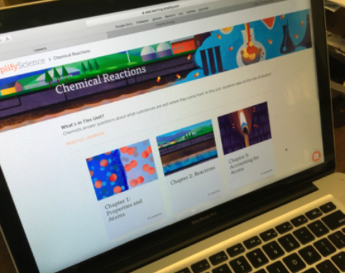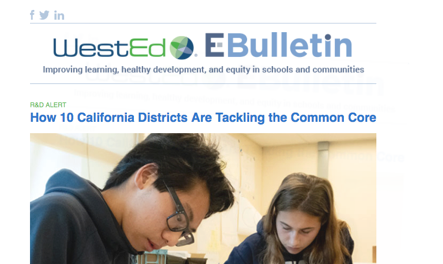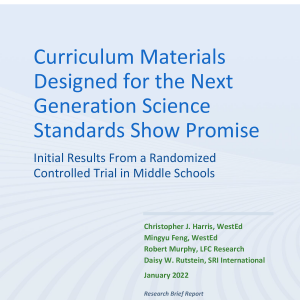The Next Generation Science Standards (NGSS) put forth a vision for K–12 science classrooms that recasts science proficiency as not only what students know, but also how they can use and apply what they know.
This knowledge-in-use perspective represents a different way of thinking about science learning: disciplinary core ideas, science and engineering practices, and cross-cutting concepts should work together to enable students to reason with evidence, make sense of phenomena, and design solutions to problems.
Because the NGSS are so vastly different from previous standards, many developers are creating the next generation of science curriculum materials. To date, few research-based curriculum materials have been designed from the ground up for the NGSS, and thus there is limited evidence-based research on the efficacy of NGSS designed curricula.
Background
WestEd, with research grant funding from the National Science Foundation, is leading an efficacy study to examine the impact of the Amplify Science Middle School (ASMS) curriculum on teaching and learning.
Designed by the Lawrence Hall of Science in collaboration with Amplify Education Inc., ASMS is the Hall’s first comprehensive curriculum program designed expressly to meet the vision and address the performance expectations of the NGSS. The materials provide students in grades 6–8 with opportunities to engage with core ideas and crosscutting concepts in the context of science and engineering practices over time to strengthen their science proficiency.
The curriculum package for students and teachers includes a digital platform along with physical materials for hands-on activities.

Methodology
The research team conducted the study in middle school 7th grade science classrooms across several school districts during the 2019–20 school year. The districts in the study were in different geographic regions and represented a range of diverse student populations. This study was a randomized controlled trial where schools within districts were randomly assigned to either a treatment or control condition. Teachers in the treatment condition schools implemented the ASMS curriculum and received accompanying professional learning support. Teachers in the control condition schools implemented their regular curricular materials and received professional learning as offered by their districts.
The study included multiple measures of student learning outcomes, implementation, and teacher instructional practice. The learning outcome measures were science assessments that required students to use and apply their knowledge related to NGSS performance expectations. The implementation and instructional practice measures were in the form of weekly instructional logs and teacher surveys.
Our main analyses compared learning outcomes for students in the treatment condition and the control condition. Additional analyses are focused on curriculum implementation. These analyses are ongoing, and the findings will inform the science education community about how curriculum materials can support NGSS instruction. We are looking into how, why, and for whom the curriculum supported teaching and learning of next generation science.
Learn More
Our initial findings on student learning outcomes in physical science are shared in the WestEd research brief, Curriculum Materials Designed for the Next Generation Science Standards Show Promise.



